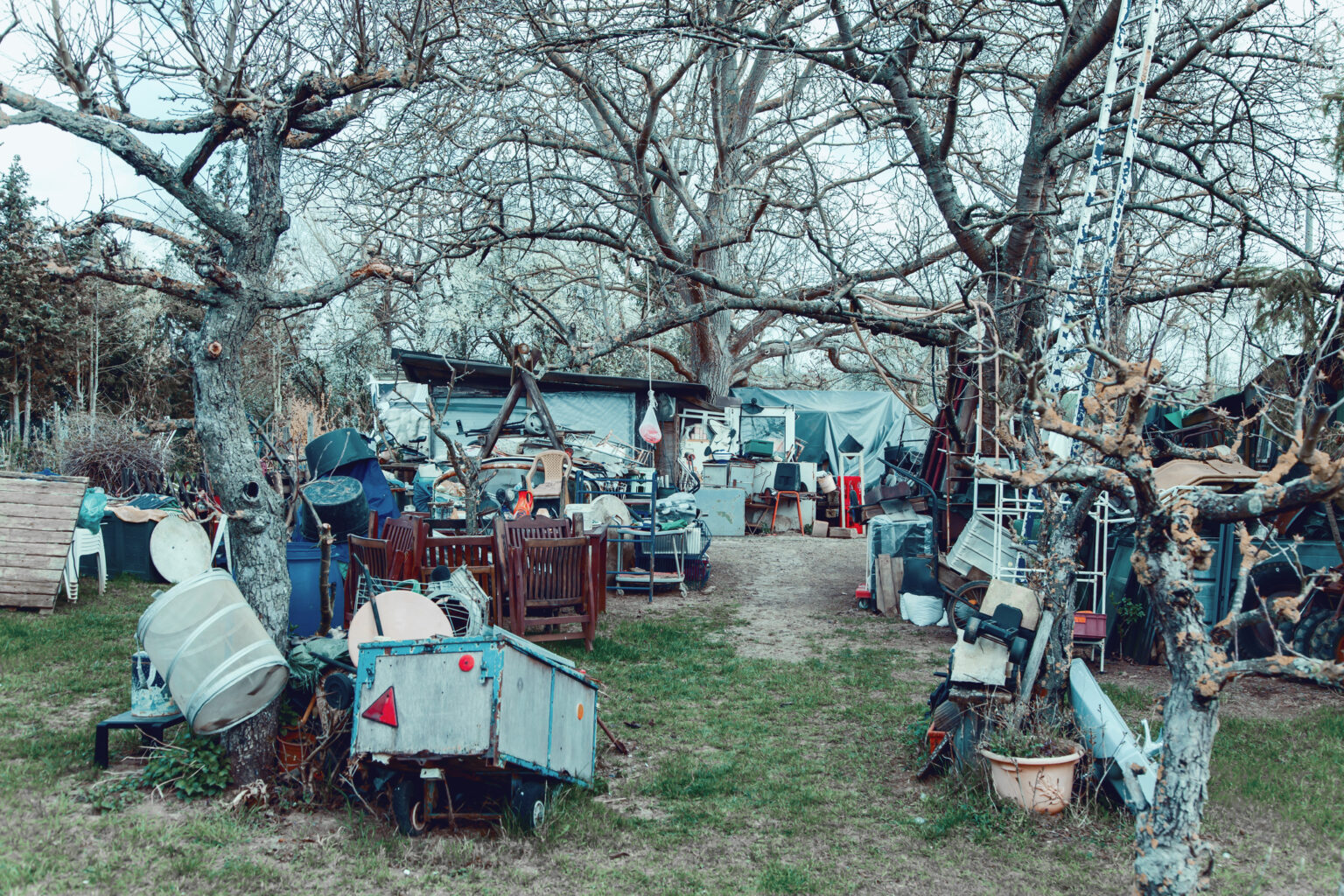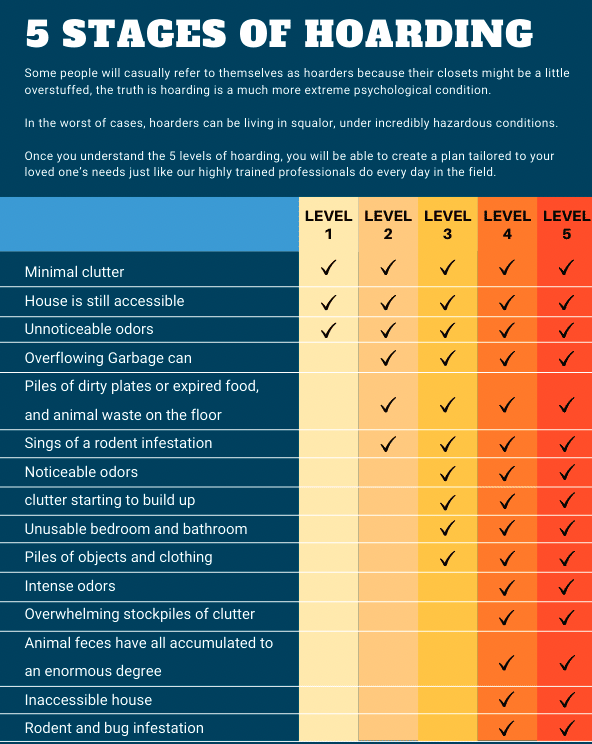Ask a group of 10 landlords about their most feared rental scenario, and at least one will mention renting to a hoarder. It’s no wonder why. TV shows about hoarding have blasted across the airwaves for over a decade – A&E’s Hoarders debuted in 2009 and ran over 100 episodes. Other programs followed shortly, giving much of the public their first view into the lives of people suffering from this condition.
But a hoarding doesn’t often appear on an applicant’s screening report, nor can you decline an applicant because they hoard – so what’s a landlord to do? In this article, we’ll define hoarding, explain how the Fair Housing Act comes into play, and provide a step-by-step guide to handling hoarding with care.

Is Your Tenant Hoarding?
Hoarding is a nuanced mental health condition that impacts both the individual and their community – which is why it’s critical for landlords and property managers to approach the situation with empathy. First, your tenant isn’t alone. According to the American Psychiatric Association, “the overall prevalence of hoarding disorder is approximately 2.6%, with higher rates for people over 60 years old and people with other psychiatric diagnoses, especially anxiety and depression.”
Hoarding often gets misunderstood; it’s not the same as a collection. Hoarded objects are kept due to a perceived need to save them, and attempts to part ways with these objects lead to distress. The assorted items build up, typically into disorganized clutter. You may have a tenant who cherishes their expansive toy car collection, but that alone doesn’t make them a hoarder.
How else can you tell the difference between an eccentric tenant and someone with hoarding disorder?
Signs Your Tenant is Hoarding
The biggest hallmark of hoarding is disorganization. Unfortunately, clutter can build up to the point that fire exits aren’t usable and the property is no longer up to code. Many hoarders feel significant shame about the disorganization their disorder creates and will resist having most people in their unit.
Be aware of the signs of hoarding, like:
- Conflict between neighbors over clutter
- Pest reports, such as cockroaches and mice
- Unusual odors
- Excessive accumulation of goods/appliances, particularly if it’s spilling out onto their porch, yard, or sidewalk
- Social isolation
In short, if someone’s accumulation of goods disrupts their day-to-day life and responsibilities, they may be struggling with hoarding disorder. That doesn’t mean you need to buy a chaise lounge and offer therapy in your office, but you can be compassionate while protecting your rental property.
Although the following levels aren’t diagnosable through the DSM, it may help you to think about hoarding as Hoarders 911 presents it:
- Level one: There’s minimal clutter, the unit is still accessible, and odors are unlikely. However, the tenant is showing signs of an obsessive need to collect. It may even become the main focus of your conversations.
- Level two: The clutter and odor are picking up, manifesting in overflowing garbage cans, piles of dirty plates, and animal waste. The unit remains accessible.
- Level three: Odors are now pronounced. Clutter builds outside of the unit, and at least one room is unusable. Piles of objects and clothing plus the unsanitary conditions are beginning to pose a health risk.
- Level four: Intense odors, towering piles of clutter, and animal feces have accumulated significantly. Exits and entryways may be blocked off. Bug infestations are likely, and this poses an extremely high health risk.
- Level five: Pet capacity exceeds the legal limit, the property is sustaining structural damage, and conditions are hazardous. Human waste may be found in undiscarded bottles or on the floor. It’s likely that hoarders at this stage will face legal issues, typically related to animal hoarding.
Luckily, early intervention can stop situations from escalating – and the earlier you start having these conversations with your tenants, the better. Skip ahead to resolve an active hoarding situation, or keep reading to learn the legalese around hoarding.
Hoarding and the Fair Housing Act
The Fair Housing Act protects against discrimination based on seven protected classes – one of which is disability status. Because hoarding is an often debilitating mental health condition, it’s considered a disability. Therefore, landlords and property managers cannot refuse to rent to a hoarder, nor can they immediately evict someone for hoarding in their unit.
If someone is hoarding animals in the unit, that’s an entirely different matter and may be considered a felony in your state. Talk to your local government to determine next steps for your area.
Did You Know?:
Your first fair housing violation can cost up to $16,000. Invest in your education and save yourself a hefty fine with TurboTenant’s online Fair Housing for Landlords course.
Providing a Notice to a Hoarding Tenant
Hoarding is complicated, and many landlords don’t dive into the topic until they’re actively facing a tenant situation. That said, there are preliminary steps you can take to head off hoarding problems before your tenant moves in.
Before Signing Your Next Lease
- Look up your local landlord-tenant laws regarding hoarding. Our resource page is a great place to start, but find the housing website of your unit’s local government to ensure you’re on top of the latest information. Specifically, see if there are state or city-specific requirements around the resolution process, communication with your tenant, etc.
- Beef up your lease agreement. If there are specific timelines or processes to deal with hoarding as dictated by your state or city, spell them out in your lease. You’ll also need to:
- Define how often your tenant can expect an inspection – and be sure to follow through
- Set your expectation of cleanliness with clear examples (fire exits must be accessible at all times without delay, garbage must be taken out once per week, etc.)
- Outline the most pressing code violations along with their consequences
With these two steps, you’ll create a document that distinctly explains to tenants what will happen if hoarding occurs. But what if you have a tenant who begins hoarding and your lease doesn’t contain the suggestions above?
During an Active Lease
- Early intervention is key, and having a regular inspection schedule makes it easier to keep up with the state of your units. If you see a tenant start to engage in level one or two behavior, act promptly. Have a compassionate, non-confrontational conversation with your tenant. Let them know that you’re worried about their safety and property damage in a respectful, empathetic manner.
- Ask your attorney for reasonable accommodations that can help the hoarder maintain a safe living space without infringing on other residents or violating local health, safety, and coding regulations.
- Update your lease with an addendum, and ask your tenant to sign it.
- Offer them resources, like a referral to mental health professionals, support groups, or local social services designed for those with hoarding disorders.
- Document each conversation, inspection, and any other actions taken to address hoarding-related issues.
Hoarding is so much more than being messy or having a collection of objects. It’s a mental disorder that can become dangerous, both for the sufferer and for the property owner. By maintaining a good relationship with your tenants, performing regular inspections, and keeping empathy at the forefront, you can tackle even the most complicated hoarding problems.
Do you need help keeping your rental business organized? Let TurboTenant do the heavy lifting! Our all-in-one landlord software offers everything you need to manage your residential rentals. Sign up today!








